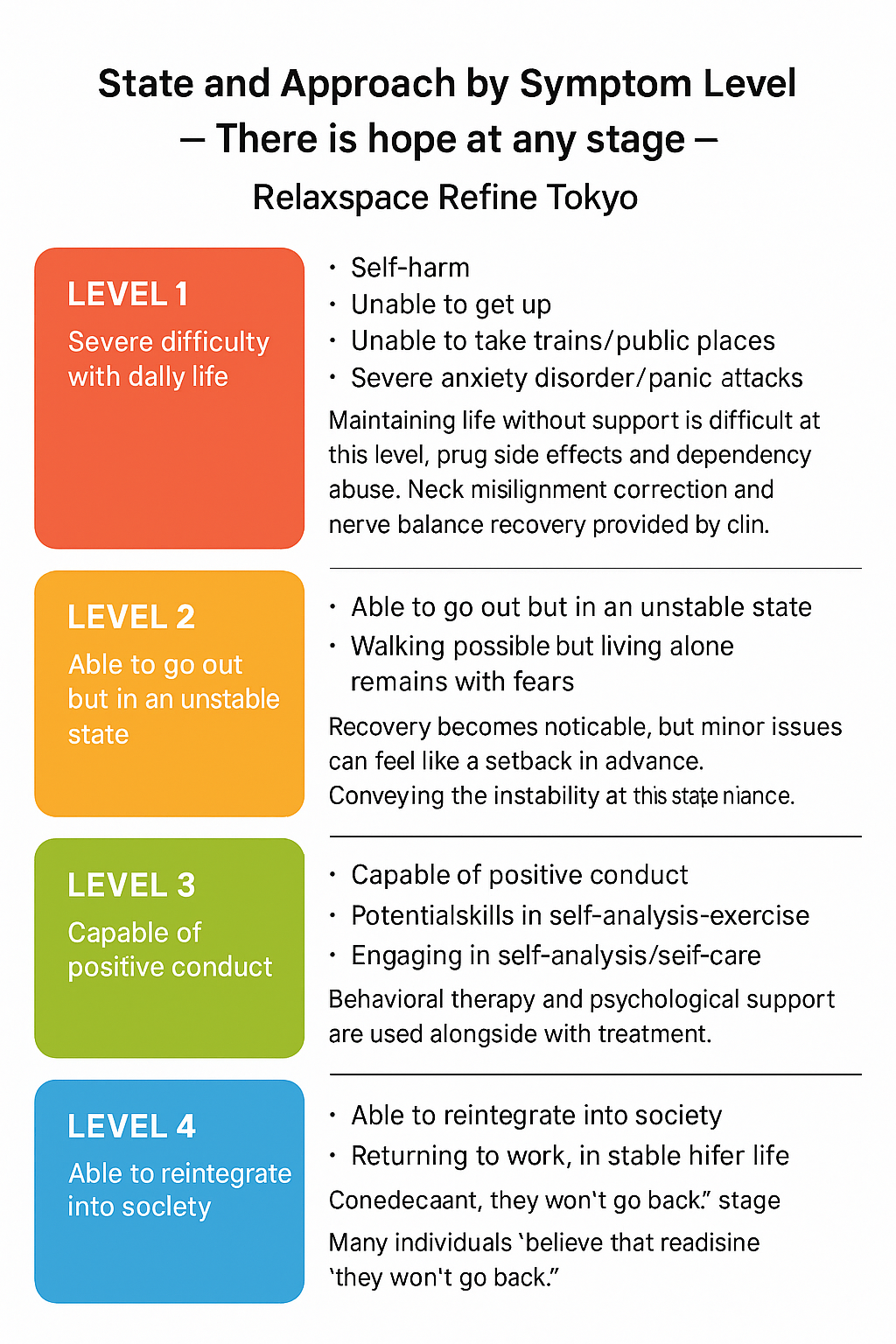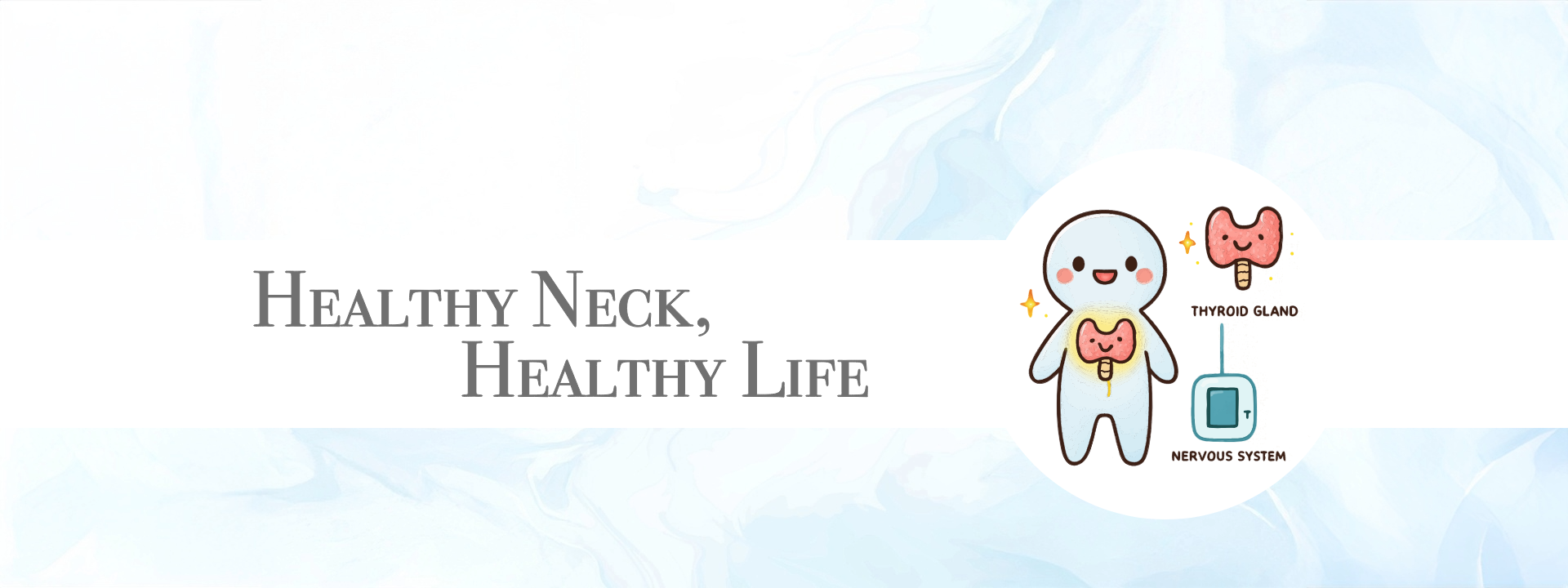Where Can You Turn for Help?
Medication doesn’t work. Counseling doesn’t help. You can’t even get out of bed. You can’t do anything.
When this state continues, both the individual and their family may feel completely overwhelmed—mentally and physically.
However, what appears to be a “mental problem” is often deeply connected to physical causes. In particular, misalignment of the cervical spine can disrupt the autonomic nervous system and lead to symptoms such as anxiety, fatigue, and lack of motivation.
At our clinic, we focus on these physical aspects and support recovery from Level 1 to Level 2 and beyond—through an approach that differs from hospitals and medication. We’ve seen many clients gradually regain their lives, starting from a point where they could do nothing at all.
Below is a summary of conditions and care strategies based on each stage of recovery. Understanding which stage you or your loved one is in can help you take the next step forward.

Supplement: Our Approach to Care and Prevention
- Behavioral therapy should be introduced from Level 1. The decision of what a patient can or cannot do should not be left solely to them; supporters must make informed and safe judgments.
- There are always warning signs before reaching Level 1—such as poor posture during sleep, cervical misalignment, prolonged fixed positions, and lifestyle rhythm disturbances.
- By adjusting the cervical spine and restoring balance to the autonomic nervous system, the risk of recurrence significantly decreases. In contrast, medication-based temporary relief often leads to repeated relapse.
- Fundamental recovery requires a combination of physical adjustments, lifestyle habit improvements, and exercise therapy. Working together with supporters ensures steady progress at a manageable pace.
- Simply offering emotional support does not lead to change. “Support without pressure” and “support that encourages action” are different. Step-by-step confidence building through behavioral therapy is the key to sustainable recovery.
Our Philosophy and Technique
We have developed our original method based on chiropractic theory, which has over 100 years of history. While chiropractic is recognized as a licensed profession in 42 countries, it is still not widely accepted in Japan.
By focusing on the relationship between body structure—especially the cervical spine—and the nervous system, we have accumulated numerous recovery cases.
Many patients who visit our clinic were told “nothing is wrong” at hospitals and found no improvement with medication or counseling.
For example, families of children diagnosed with orthostatic intolerance who could not attend school often tell us, “We were relieved to learn that there was a physical cause,” and “They felt better physically, and mentally too.”
Through combining this clinical method with step-by-step behavioral therapy, we have supported faster recovery and reintegration into society.
We strongly believe that structured facilities offering this approach are needed. However, due to systemic constraints and vested interests within Japan’s medical and pharmaceutical systems, establishing such facilities is still difficult.
Nonetheless, if any country, region, or governmental body is interested in this initiative, please contact us. We hope to create a new support model that addresses both mental and physical well-being—together.




コメント